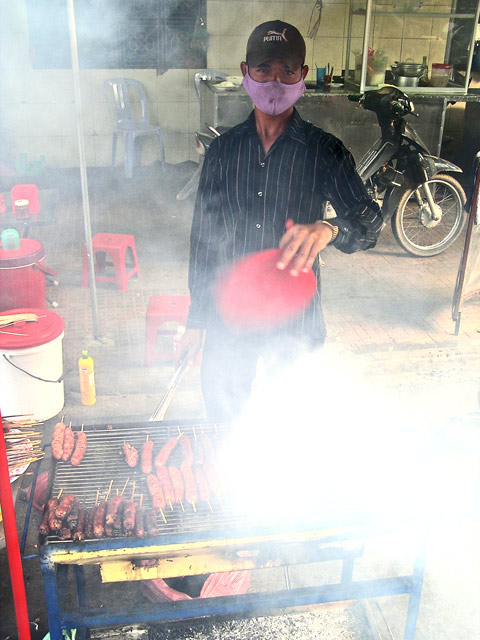Cambodians are world champion charcutiers. What the locals lack in quality produce, they make up for in sheer volume and world-beating determination. A Cambodian household that doesn’t dry its own fish, meat scraps or leftover rice is rarer than one that doesn’t enjoy the sublime beauty of prahok. Everybody knows how to sun-dry their own ingredients: probably the best way to spot a non-Cambodian household is to pick the one without a tray of leftovers soaking up the sunlight at the front of the house. It’s a response to the seasonal nature of Cambodian food. The frequent boom and bust cycles of local agriculture and fisheries have forced everyone to develop a taste (and huge amounts of skill) for preserving everything that they can eat.
The Cambodian sausage is much maligned. It’s palm sugar-sweet, composed of half pork gristle and half pork fat, sometimes a touch of chilli for color, sold grilled on the dirtiest streets imaginable. They are inspired by Chinese sausages (laap cheong(?)) but will also be sold as small ball-shaped sausages as well as the more recognisable links. Vendors make their own links which they hang from a clothes rack to semi-dry before barbequing over hot coals. While hanging, the sausages pick up a little of the smoke-flavour from their charring compatriots as well as a good deal of dust from the road. Of all Cambodia’s streetside foods not deliberately involving fermentation, this is the one that I approach with the most trepidation.
The above sausage was served on a stick; a one-handed food in the parlance of modern convenience cuisine. More often than not, it is plated up with a basic pickle of shredded green papaya, carrot and vinegar that slices through the sausages’ sweetness and fattiness.
Location: Near Psar Chas, Phnom Penh. 500 riel per stick.

